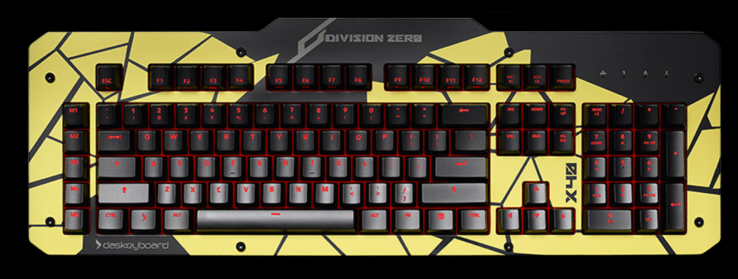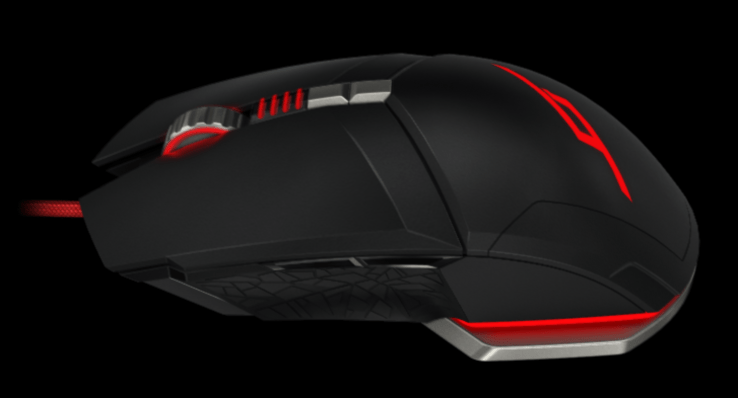
Das Keyboard, makers of super-clicky, super-heavy keyboards for hacker ninja warriors has announced a new line of keyboards and mice for the gaming set. Called Division Zero, the new X40 keyboard has a metal top panel, LED-lit keys, and new gold-plated switch contacts. The top panel is removable and replaceable and n-key rollover for maximum badassery.
They’ve also launched an M50 mouse with 9 programmable buttons. The keyboard costs $149 (it’s also available in a tactile “clicky” variety) and the mouse is $79.
How do they work? I was quite pleased with the X40 although the key layout was a little off for me while touch-typing. The non-tactile keys are a bit soft in my opinion but I’ve been using clicky keyboards for a while and miss the interaction. However, as a general-purpose keyboard it works well. In terms of gaming I didn’t mind the AWSD positions and found all of the keys easily accessible.

The mouse offered a bit more of a learning curve. I noticed a very slight drift even when the mouse looked perfectly still, an artifact perhaps of my setup. However, the bottom surface was very smooth and the buttons experience seamless. I can’t speak to the long term ergonomics of the mouse but the hand position was similar to my original Razer gaming mouse that I’ve used for the past few years. It features a rugged cable and programmable game settings.

The mouse offered a bit more of a learning curve. I noticed a very slight drift even when the mouse looked perfectly still, an artifact perhaps of my setup. However, the bottom surface was very smooth and the buttons experience seamless. I can’t speak to the long term ergonomics of the mouse but the hand position was similar to my original Razer gaming mouse that I’ve used for the past few years. It features a rugged cable and programmable game settings.
This is Das Keyboard’s first foray into the gaming arena and, as such, they are playing it safe. The keyboard and mouse are exactly as you’d expect – solidly built with nice key travel and button switches – and the customizations are clever if a little generic. In a battle between, say, a Razer BlackWidow and the X40, I’d say that the X40 has a nicer build quality and I’d definitely trust the keyboard switches in the Das Keyboard model. However, in terms of features the competitors are clearly a bit ahead of this new gaming line.
In the end, keyboards and mice are about personal preference. If you don’t want a lot of fancy LED customization and instead want a keyboard that can feasibly cut through a wooden 2″x4″ with enough coaxing, this might be the keyboard for you.

Comments
Post a Comment